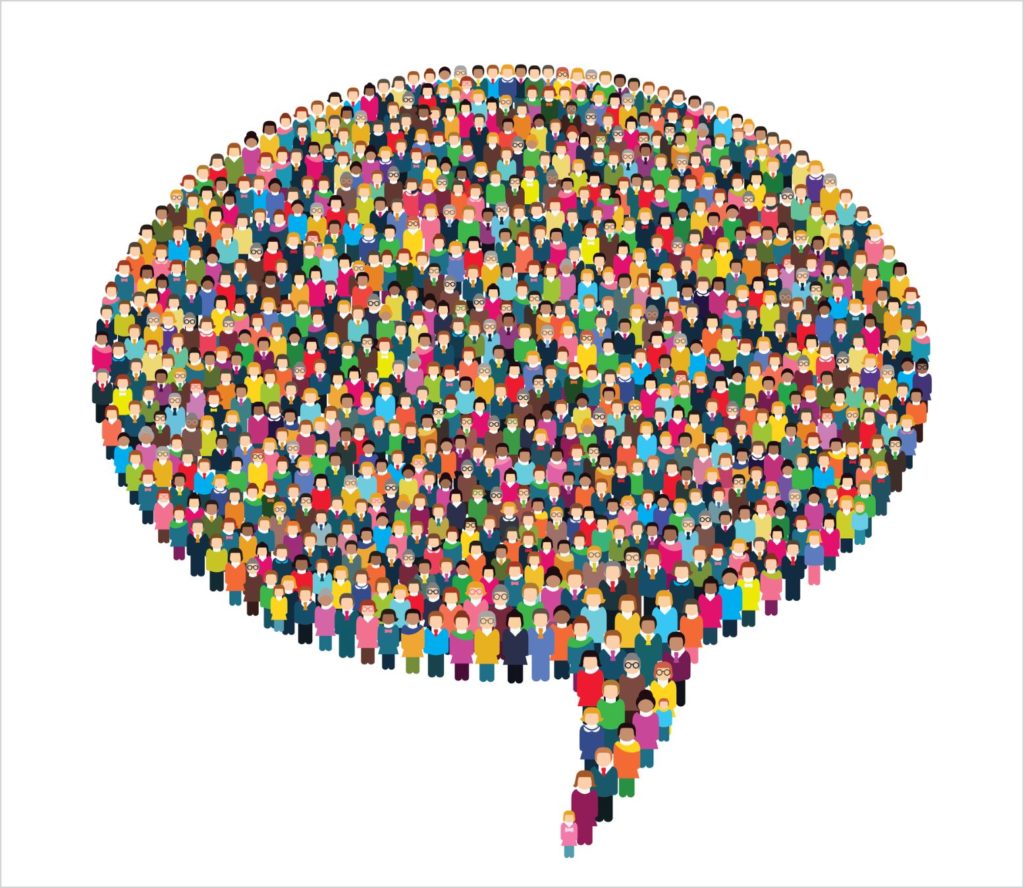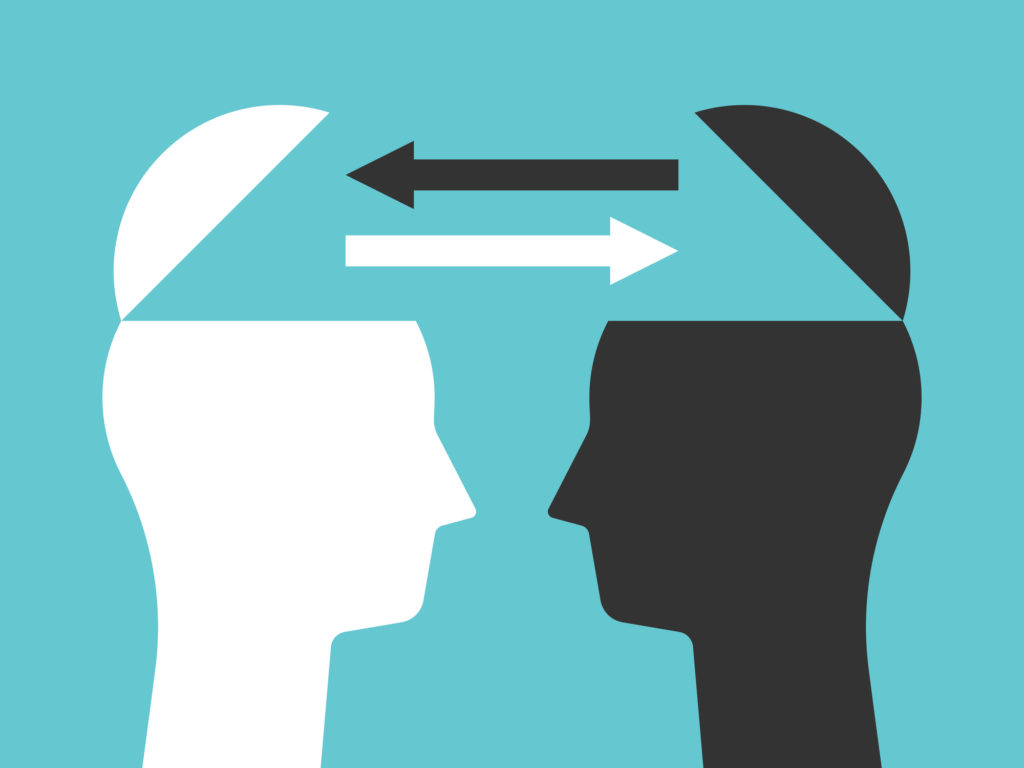21 Offensive Words You Should Avoid

Words matter, whether you are saying them in front of a camera, to a room full of conference attendees, to an online audience, to members of your board, to your co-workers, to your clients, to your stakeholders, or to an entire nation.
Just last week, The New York Times reported on a rhetorical overhaul at the White House to remove some and add other words and phrases across a wide spectrum of communications channels – all to better reflect President Biden’s political outlook and policies.
Language is fluid, reflecting societal and cultural changes that impact the meaning and connotation of words, as well as an audience’s reaction to them. That’s why it’s important if you are engaged in any kind of communication – internal or external – to make yourself aware of terminology that some groups may find offensive.
To further complicate matters, not everyone within those groups may agree on what is and what isn’t offensive, nor may you consider them offensive. You may even dismiss them as overly PC.
But, if you want people to focus on your content, you don’t want to use a word, a term, or a phrase that unintentionally alienates them. If you want to be effective, you should be aware of some of these evolving linguistic preferences. In the list below, we offer 21 words and practices to be mindful of, as well as alternatives that will make your communications far more inclusive.
21 Words and Phrases to Avoid
1. Deadnaming – It’s not so much the word as the practice. Deadnaming occurs when you refer to a person who’s transgender by the birth or given name they used before they transitioned.
2. Misgendering – This also is more a practice than word choice. It occurs when someone describes a transgender person with pronouns that do not align with the gender to which they identify. If you are unsure which pronouns to use, you can ask the person which they prefer (see No. 8 below).
3. Transgenderism, transgendered, transwoman, transman – These terms are offensive to many in the transgender community. The proper terms are transgender (no -ism or -ed) and trans woman or trans man. This article does a good job of explaining why. GLAAD, the LGBTQ media advocacy organization, has several comprehensive guidelines on terms and phrases to use to fairly and accurately talk about transgender people, including the one you can find here.
4. Homosexual – The preferred word for people attracted to members of the same sex is gay or lesbian.
5. Sexual preference – In referring to someone’s physical, romantic, and/or emotional attraction to another, the preferred term is sexual orientation or, simply, orientation. The AP Stylebook also offers guidance.
6. Sex change – Transition is the preferred term for the process of living as a gender one identifies with rather than the sex assigned to them at birth. (You can find additional terms to avoid on the GLAAD website.)
7. Mom/Dad – Yes, mom and dad. In and of themselves, mom and dad are not offensive terms, and based on the context you are using them, your audience, and the purpose of your communication, they could work just fine. However, just be aware these words (as well as terms such as husband and wife) reveal an assumption of certain family structures, as well as “traditional” gender roles in the home, that may or may not resonate for some members of your audience. The better words are parent(s); partner or spouse.
8. He/she. You certainly can use he/him or she/her to describe individuals who identify with those pronouns. However, plural pronouns, such as they/them/their, are better if you are addressing an audience to which you are not sure of preferred pronouns. (Learn more here.)
9. Master/slave – Largely used in the tech industry, master and slave signifies the relationship where one device has control over and initiates the commands of another. It’s also used in real estate to describe the “master” bedroom. Better to use primary and secondary, parent and child.
10. Whitelist/blacklist – Again, largely tech terms (although blacklist has cultural significance, too), they describe security controls to allow or limit, respectively, access to a system or network. Allow or deny or include or exclude are better choices. (For a broader application to replace blacklist, boycott is better.)
11. Slave vs. enslaved – When you use the word “slave” to describe a person who was held in bondage and forced to perform labor, it can be dehumanizing, in that it focuses on circumstances rather than the person’s identity. Today, most historians talk about enslavement or people who were enslaved.
12. Peanut gallery – This is a classist and racist phrase that dates to the late 19th century. Originally, this term described the cheapest seats in a theater. However, it also was used to describe the upper balcony seats in segregated theaters. A far better word is hecklers.
13. Grandfathered/Grandfather clause – Recently, a Massachusetts Appeals Court recognized the racist connotation of this word by refusing to use it in a ruling. The phrase originally referred to laws, adopted by some states in the southern U.S. after the Civil War, which created barriers for African American voters.
14. Gyp, Gypped – It has long been tossed about in casual speech to describe someone who has been cheated, ripped off, or conned, but the word comes from the word “Gypsy,” which is considered a racial slur among the Romani or Roma people. Far better to use the words that started this entry.
15. Spirit Animal – In 2019, pop singer Rhianna was criticized for her use of the term “spirit animal” in referencing her bond with her dancer and choreographer Parris Goebel. She was called out for misappropriating a sacred concept in indigenous cultures. It reflects a larger issue of being cognizant of using symbolism and words sacred to certain cultures in a casual manner that could be deemed offensive. (For more information, visit Reporting in Indigenous Communities. )
16. Old people – When it comes to talking about age, it can be a touchy subject. The term “old” can be seen as pejorative – something that is obsolete and decrepit. Some don’t like the words senior or elderly, either. Of course, connotations are formed by how a culture sees aging. Simply adding “-er” at the end of old (as in older adults) can soften it. Also, signifying the actual age range you are talking about, 75 and older, say, negates the need for words like old or senior. (AARP delves into ageist language here.)
17. Chairman/Salesman/Policeman – Although many are now aware that police officer is better than policeman, it’s important to be sure your terminology is gender-neutral when talking about occupations. (You want to be careful with freshmen and underclassmen, too. You can choose first-years and sophomores instead.)
18. Bipolar/OCD/PTSD/Schizo/Psycho – It’s best to simply never use any of these words in any way to describe an everyday or casual occurrence. (“I think crunching all this data gave me PTSD.” “My computer is being bipolar today.”) You could potentially insult a person who has been diagnosed with any of these mental health illnesses or conditions or someone who knows someone who has.
19. Tone-deaf – Using this phrase to indicate someone misread a situation or said or did something inappropriate, thoughtless, or inconsiderate, links deafness with something negative – something that someone failed at. It’s part of a broader problem known as ableism – discrimination or social prejudice against people with disabilities. Here’s a good guide on how to steer clear of similar words and phrases. It also speaks to the concept of “people first,” when talking about someone’s disability or illness. It’s a person on the autism spectrum, not an autistic person.
20. Afflicted By/Suffering From/Victim of Mental Illness. Any illness or condition someone has (physical or mental) simply is a fact and to couch it with words such as “afflicted by,” “suffers from,” or “is a victim of,” says more about your take on their situation than theirs. If it is necessary to mention it at all, a better way to say it would be, “He was diagnosed with bipolar disorder.” (You can find a useful guide from the American Psychiatric Association here.)
21. Normal. What’s normal doing on this list? Too often it is used as a label while differentiating data or behavior. If someone evidences “normal” behavior, are all those that don’t abnormal? The words “usual” or “typical” work better by providing a more quantifiable explanation, as well as sounding potentially less judgmental. (Visit the National Center on Disability and Journalism for a comprehensive disability language style guide.)

Final words
We’ll offer the same advice we offered in a similar post last month: You can become a better communicator when you identify the biases and stereotypes that you may carry. Often, the offense is unintentional and based on those unconscious biases that you aren’t aware you hold, whether about age, religion, ethnicity, education, physical ability, looks, appearance, gender identities, sexual orientation, or social class.
This list is not meant to overwhelm (nor is it comprehensive), but rather it’s offered to remind communicators that language has as much power to exclude people from different backgrounds and experiences as it does to include them.

